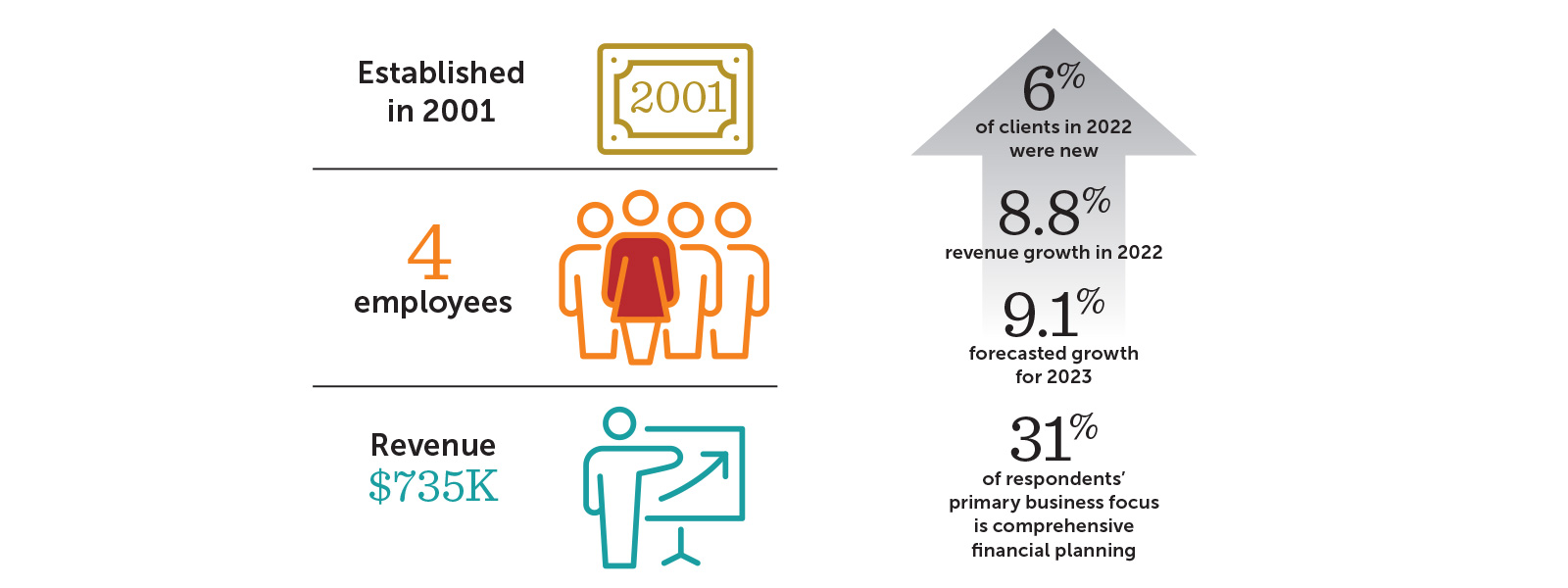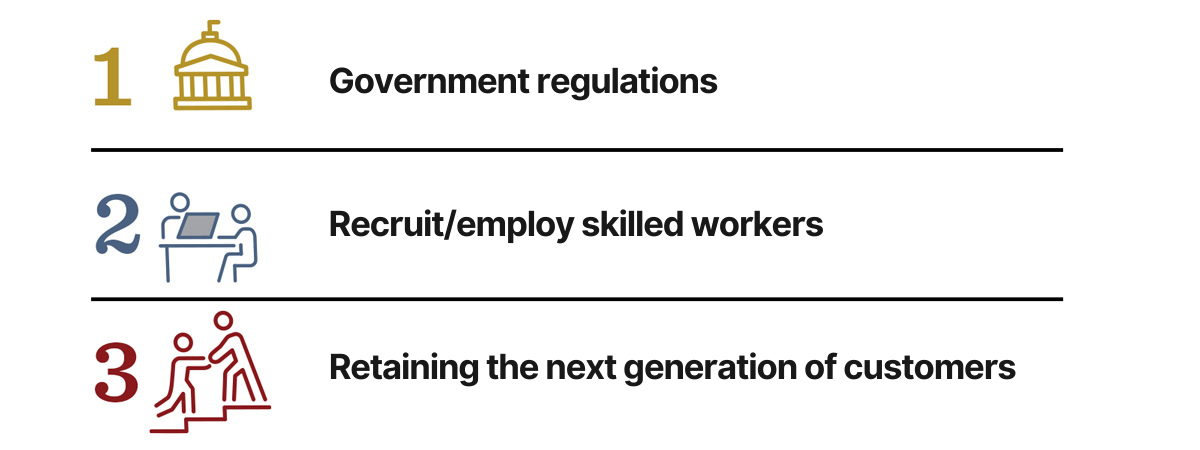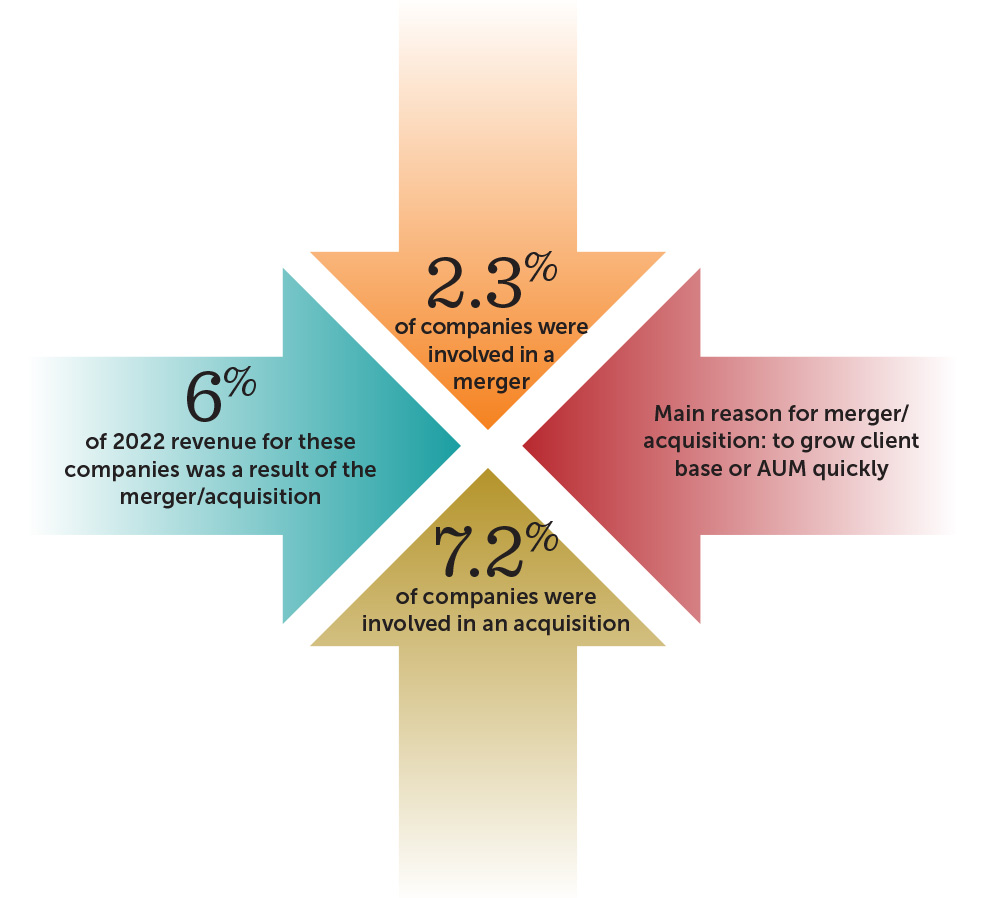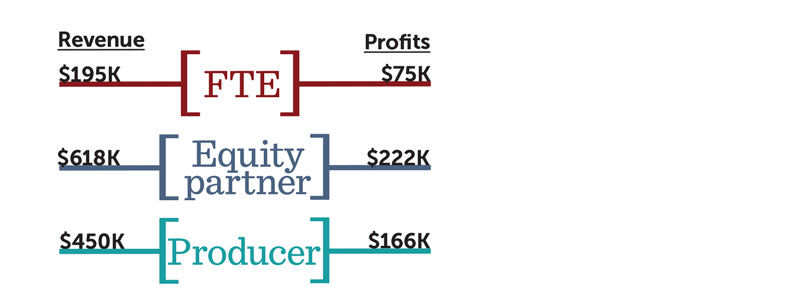
There’s a difference between identifying a vulnerability and feeling like you have the bandwidth to do something about it. So, when the annual MDRT Benchmarking Survey indicated that her practice was overstaffed, Aurora L. Tancock, FLMI, CFP, shrugged it off.
“I had a sense we were not as efficient as we could be, but I didn’t take the time to look into it because I was trying to be in front of clients as much as possible,” said the 23-year MDRT member from St. Catharines, Ontario, Canada. “I was too focused on client interactions to scrutinize the inner workings of the office.”
That was until Tancock attended a breakout session at the Top of the Table Annual Meeting, where she learned how to customize the survey and compare her practice to others doing the same type of business — in this case, retirement and estate planning for 225 families, with 75% of the business focused on wealth planning and 25% on insurance/risk planning. The finding remained: overstaffed.
This time, Tancock listened. She asked her office manager to compile a list of what each member of her staff — at that time included two advisors in addition to Tancock, four full-time team members and one part-time — was doing and whether they were fully trained, mostly trained or still needed a lot of training. This inquiry identified that among multiple recent hires who needed more training, one in particular was having difficulty completing the work that was being assigned to her, leading a colleague to take on her responsibilities because she didn’t have enough work to do herself. Plus, being overstaffed led to idle time; although the work was being completed, not all staff members were working efficiently. Without the Benchmarking Survey, Tancock wouldn’t have looked closely at how her practice was operating or made the changes that have resulted in improvements.
Take stock of your stack
- The annual confidential survey collects information from Court of the Table and Top of the Table members to help members learn from each other’s performance, challenges, goals and more.
- The 2023 survey was completed early during the year and included data from 316 members.
- Participants in the survey receive access to an online portal where they can customize the survey results, zero in on the information most relevant to their business and apply what they learn to their practices as they see fit.
Typical business

Significant challenges
Advisors cited these three challenges as the most significant ones their business will face during the next five years:

Key priorities for investing in 2023

Mergers and acquisitions

Key performance metrics

Best in class
The top 25% of participating businesses were identified based on aggregated performance of the following:
- Sales growth
- Revenue per FTE
- Total compensation and business profits per partner
|
|
Typical business performance |
Best in class |
|
Sales growth |
8.2% |
12% |
|
Recurring revenue |
68% |
69% |
|
Revenue per FTE |
$195,000 |
$300,000 |
|
Profits per FTE |
$75,000 |
$160,000 |
|
Staff per partner |
2 |
3 |
|
Compensation and business profits per partner |
$375,000 |
$745,000 |
The benefits of knowledge
Yet even information that doesn’t spark immediate change can be impactful.
Travis Maxwell Roche Hamilton, a five-year MDRT member from Christchurch, New Zealand, has limited opportunity to implement all lessons from the survey, as his practice is a subsidiary of a larger mortgage firm that refers all work to him. For example, ranking low for profitability didn’t necessarily concern Hamilton’s business partners due to the revenue distributed between the parties, so lowering those expenses would result in Hamilton’s practice paying less for the referrals it receives from the parent company. The paradox is the company can pursue higher revenue but won’t be lowering its cost structure. Yet, Hamilton still believes so much in the merits of the survey that he wants to help increase member participation.
“Our board definitely sees value in what I present about how we’re doing in terms of clients and revenue compared to like-minded businesses,” said Hamilton, whose team is a portion of a group of 13 mortgage advisors that includes two other advisors and two support staff who help 800 households with insurance, investments and mortgages. “It’s reassuring to know that we’re doing good things and see how we’re trending year-over-year in the right direction in a lot of areas.”
For Hamilton, that means seeing in the 2023 findings that his practice’s staff size matches other comparable businesses, which confirmed for them that they were not understaffed. It was also reassuring to see that his practice was in line with others in terms of staff roles and business priorities and pointed out a tendency to overestimate growth.
“Last year, everyone was overly optimistic, including us,” Hamilton said. “It’s good to know that when we’re planning for next year, we should be more conservative around growth targets.”
With so many clients being first-time homeowners, Hamilton’s practice is far higher than most in revenue that comes from new business (85% vs. 42%). With comparable businesses landing at around 60%, Hamilton knows he needs to keep growing his book and revenue stream to be less dependent on new business.
In addition, he used the previous year’s survey results to recognize the need to increase support staff compensation, which the board approved. For advisors in a similar situation, Hamilton recommended putting together your own analysis of the survey rather than presenting its full 30-page report for a board to interpret themselves.
“I love data and analysis and looking for trends, and the survey only takes 20 to 30 minutes,” he said, noting the comfort of knowing his company does an annual business valuation and has formal referral systems, while many others don’t. “Our goal was to be on par with other new, like-minded risk businesses in New Zealand. Now we want to add goals to be on par with the top 25%, and based on last year’s numbers, I’m estimating that we’re on track for that.”
Implementing changes
Taking action has already proved critical for Tancock. In addition to letting go of the underperforming staff member (as her inability to meet deadlines was starting to impact client service) and increasing salaries to be more competitive, she now encourages staff members to propose ideas at monthly meetings about other ways the practice can increase efficiency. Tancock also now more consistently thanks her team and checks in with them each day to get a pulse for the office, where more fully trained people feel more job security because of the alignment between employees and their roles.
“Before they saw me as being so busy that, if they had something to tell me, they felt they couldn’t come talk to me. Now I let them know, I always have time; please come and see me with any of your concerns,” Tancock said. “Sometimes I look at the Benchmarking Survey for how I stack up in terms of production, but it illustrates more than that. If you have inefficiencies in your office, you may have great production but still may not be as profitable as another firm.”
For more information on the MDRT Benchmarking Survey, please contact jschimka@mdrt.org or njohnson@industryinsights.com.

